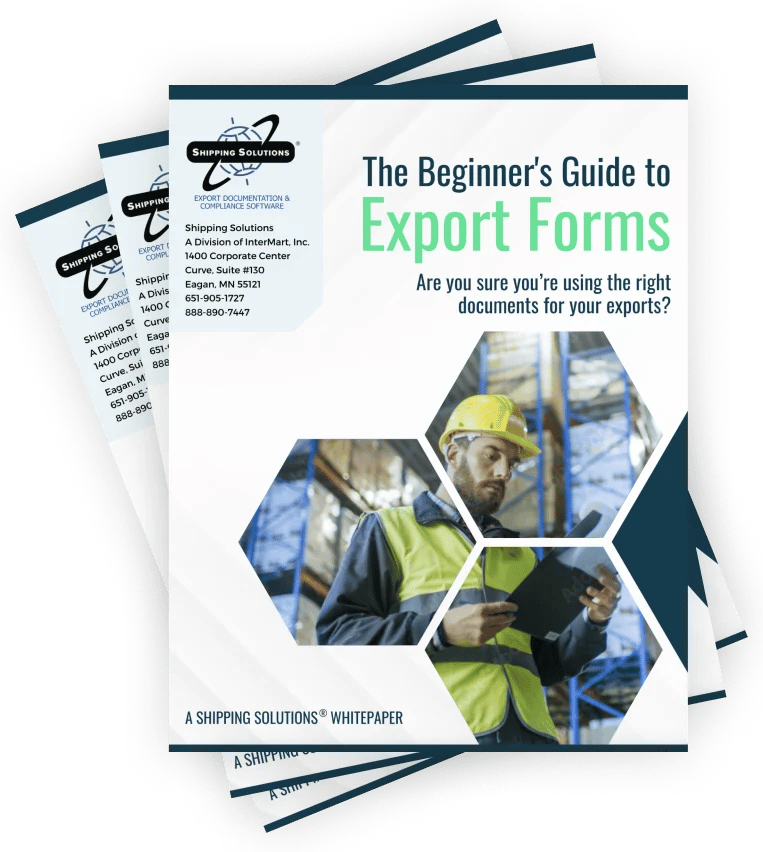The International Trade Blog Export Forms
House Bill of Lading vs. Master Bill of Lading
On: June 30, 2025 | By:  Arnesh Roy |
8 min. read
Arnesh Roy |
8 min. read
 If you are involved in shipping or logistics, you've probably heard of a master bill of lading and a house bill of lading. But if you're like many, you might not understand how they're different.
If you are involved in shipping or logistics, you've probably heard of a master bill of lading and a house bill of lading. But if you're like many, you might not understand how they're different.
Before we unpack the difference between these two types of bill of lading, it is important to understand what a bill of lading is. A bill of lading is a document that serves three primary purposes:
- A bill of lading is always a receipt that acknowledges the transfer of cargo from one party to another.
- A bill of lading is sometimes a contract for carriage. A contract for carriage is a written agreement that one party will move cargo to a particular destination on behalf of another party. In the absence of a separate contract, the bill of lading assumes the role of a contract of carriage by default.
- A bill of lading sometimes serves as evidence of title. In the context of law, title means ownership. A bill of lading marked "negotiable" indicates evidence of title and can be sold from one party to another any number of times; this enables cargo to be transferred from one transportation company to another during its journey to its destination. A bill of lading marked "non-negotiable" does not indicate evidence of title and thus it cannot be sold.
A bill of lading is just one of the many different types of export documents you'll need for your international shipments and one that you can create with Shipping Solutions. You'll find a more in-depth overview of bills of lading in the article What is a Bill of Lading: 3 Things You Need to Know, or watch this video:
As you can see, a bill of lading can serve multiple functions, and there are different types of bills of lading. So, what is the difference between a house bill of lading and a master bill of lading?
What Is a House Bill of Lading?
A house bill of lading (HBL) is a document issued by a freight forwarder or a non-vessel operating common carrier (NVOCC) to a shipper to acknowledge receipt of their items for shipment. In other words, it's a receipt for the goods.
The shipper is the exporting company, and the freight forwarder or NVOCC (which can also be referred to as a forwarding agent) is the company they’ve hired to arrange transportation of their goods to a foreign destination. The freight forwarder or NVOCC then books cargo space with carriers.
Carriers are the transportation providers—the trucking companies, shipping lines and airlines that physically move the shipment. Some freight forwarders have in-house carrier services, while others contract with third-party carriers.
What Is a Master Bill of Lading?
A master bill of lading (MBL) is a document issued by a carrier, and it represents the contract of carriage for the goods. Once the carrier has confirmed that it has received the goods, it will issue the MBL to the party that booked the freight, usually the freight forwarder or the shipper.
House Bill of Lading vs. a Master Bill of Lading: An Example
Here's how both types of bills of lading might be used in an international shipment:
Exporting Company A needs to ship four crates of solid gold from the United States to Zimbabwe. Exporting Company A submits a request to Freight Forwarding Company to arrange the shipment. Freight Forwarding Company picks up the crates from Exporting Company A’s warehouse. At this point, Freight Forwarding Company issues a house bill of lading to Exporting Company A. The house bill of lading serves as a receipt to confirm they’ve picked up the goods.
Freight Forwarding Company compares rates and availability of potential carriers and identifies Carrier Company as the right choice to move the shipment of gold to Zimbabwe. But they also identify this same company as the right choice to move other shipments from other exporters to Zimbabwe, such as six boxes of school supplies from Exporting Company B and eight pallets of hemp fiber textiles from Exporting Company C.
Since all three shipments are destined for Zimbabwe, Carrier Company picks them up from Freight Forwarding Company and consolidates them. Instead of issuing three separate bills of lading, Carrier Company issues a single master bill of lading to Freight Forwarding Company that serves as a receipt to confirm they’ve picked up all the goods for delivery to their destination and a contract for the carriage.
| Feature | House Bill of Lading (HBL) | Master Bill of Lading (MBL) |
|---|---|---|
| Issued By | Freight Forwarder or NVOCC | Carrier or Shipping Line |
| Issued To | Exporter/Shipper | Freight Forwarder or NVOCC |
| Function | Receipt for goods from shipper; may serve as contract of carriage | Receipt for consolidated goods; official contract of carriage |
| Covers | One shipment from one exporter | Consolidated shipments from multiple exporters |
| Used For | Tracking shipment between shipper and freight forwarder | Tracking shipment between freight forwarder and carrier |
| Title of Goods | May or may not serve as document of title | Can serve as document of title if marked negotiable |
Bill of Lading Frequently Asked Questions (FAQs)
-
What is the difference between a master bill of lading and an ocean bill of lading?
An ocean bill of lading is the same as a master bill of lading. It is issued by the shipping line or carrier to the freight forwarder or NVOCC.
-
Can I create my own bill of lading?
Yes, especially for small or informal shipments. To ensure all of the necessary information is included, download free bill of lading templates here.
-
What is the difference between an inland bill of lading and an ocean bill of lading?The main difference between an inland bill of lading and an ocean bill of lading is the mode of transportation involved. An inland bill of lading is used for domestic or regional shipments that primarily involve land-based transportation. An ocean bill of lading is used for international shipments transported by sea.
In Summary
A house bill of lading is always a receipt for a shipment from one exporter, while a master bill of lading is a receipt that could potentially cover the shipments of many exporters, as they are consolidated by the carrier into a larger shipment.
A HBL is issued by the freight forwarder or NVOCC to a single exporter; whereas the MBL is issued by a carrier to a forwarding agent or the shipper, depending on who booked the transport. The MBL represents the transfer of cargo from the forwarder to the carrier, and this cargo could be coming from several different exporters.
Creating accurate bills of lading—and all your other export forms—doesn’t have to be a hassle. Shipping Solutions export documentation and compliance software helps you generate professional, compliant documents in minutes. Let us show you how it works.
Like what you read? Subscribe today to the International Trade Blog to get the latest news and tips for exporters and importers delivered to your inbox.
This article was first published in August 2020 and has been updated to include current information, links and formatting.

About the Author: Arnesh Roy
Arnesh Roy was a Senior Inside Sales Representative at Shipping Solutions.


